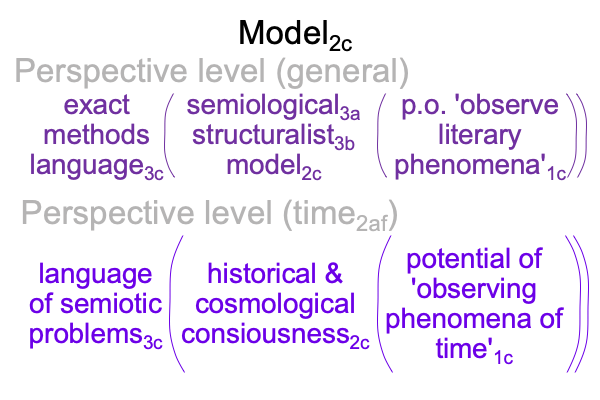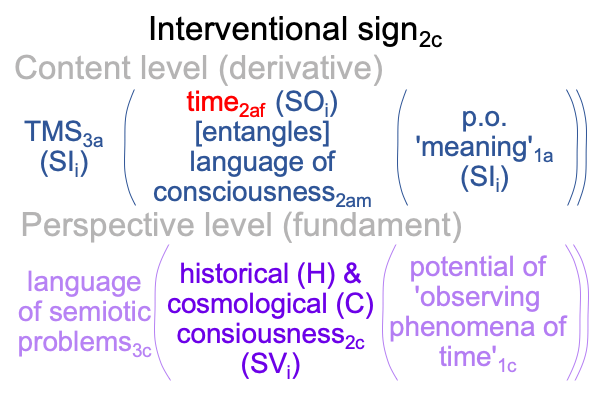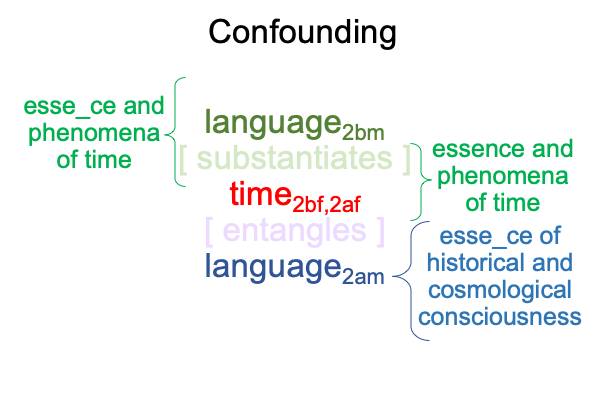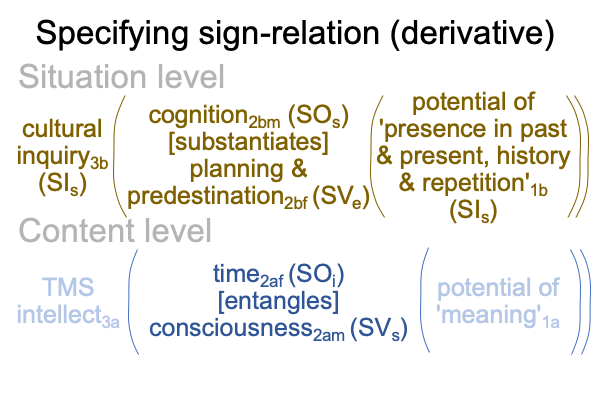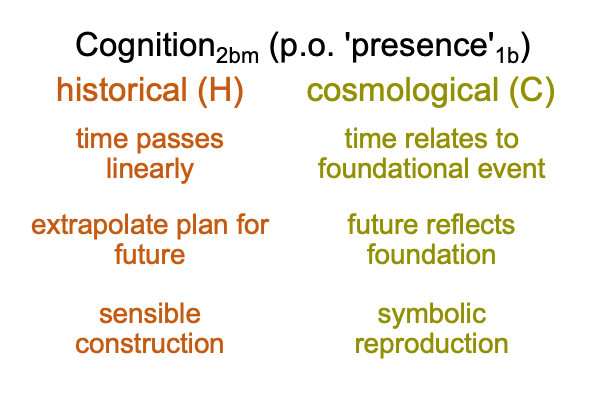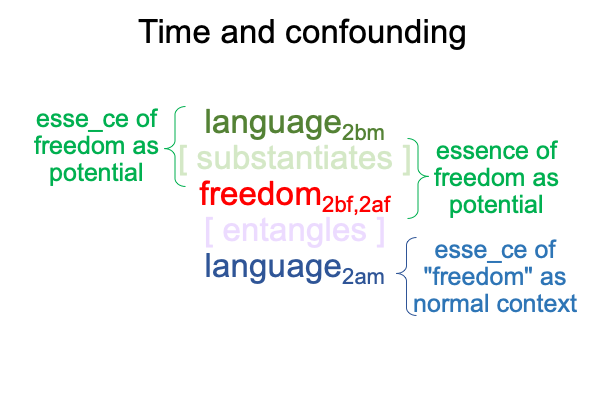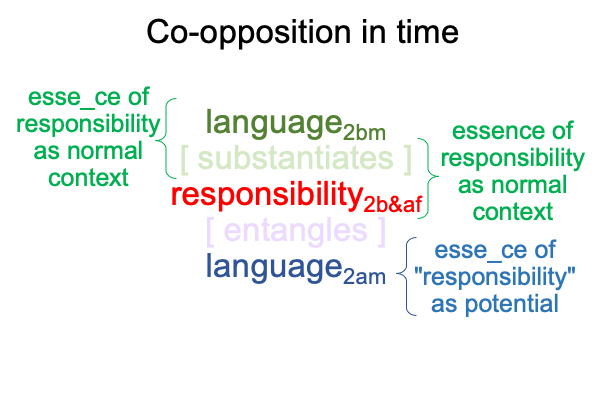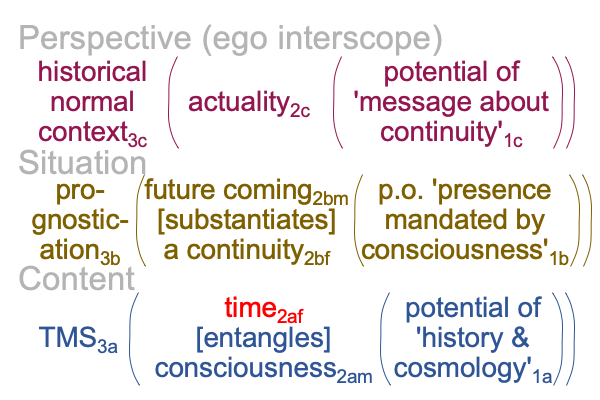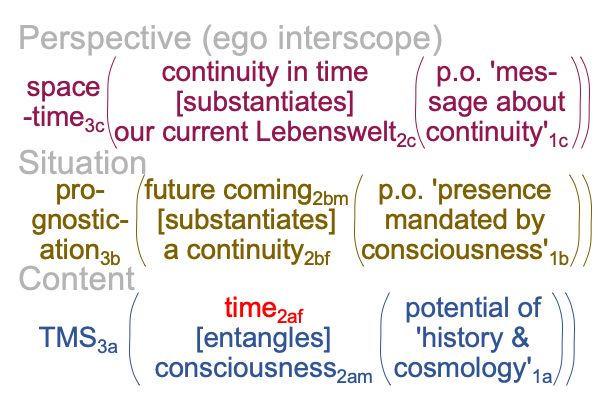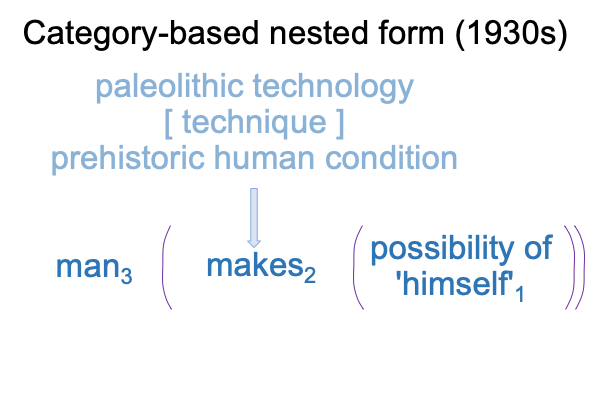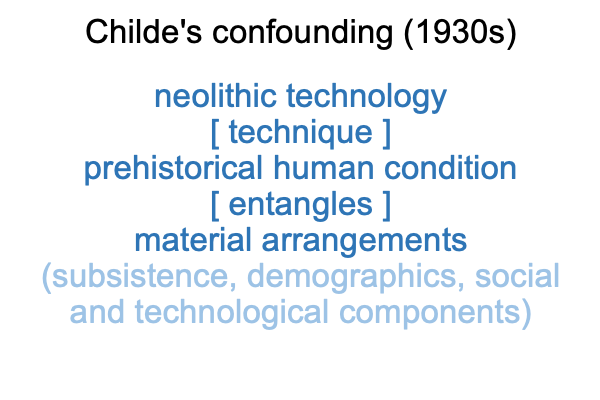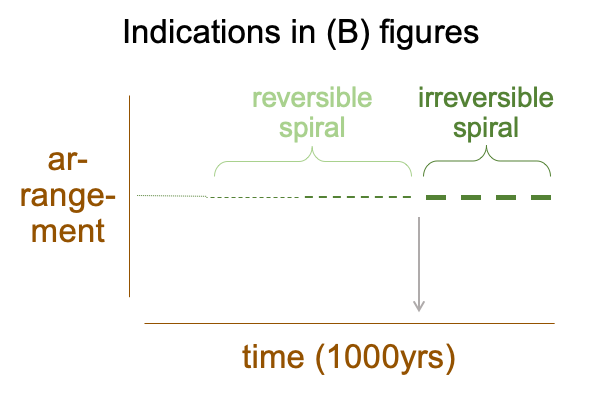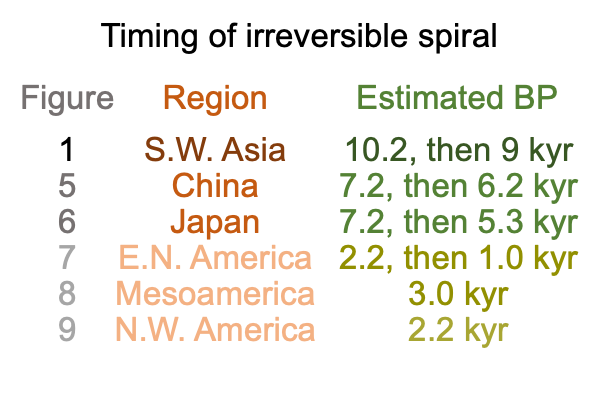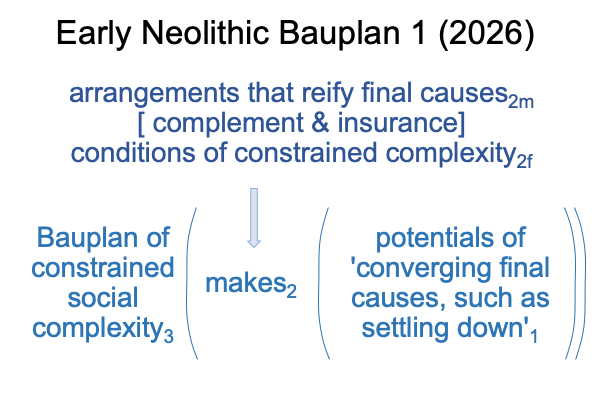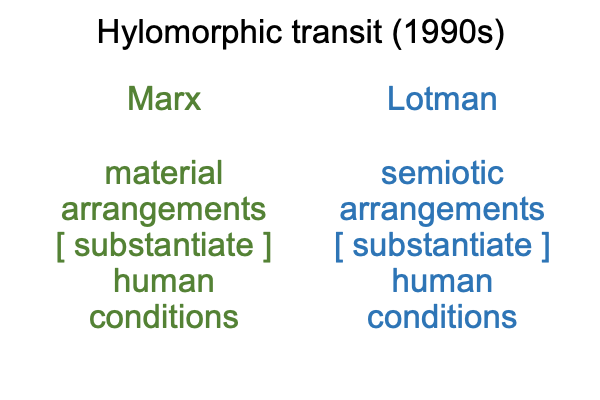Looking at Boris Uspenskij’s Article (2017) “Semiotics and Culture” (Part 3 of 8)
0666 The subtitle of the article offers a clue to the confounding, “The perception of time as a semiotic problem.”
If the article was of Marxist orientation, the subtitle might say, “The perception of time as a material arrangement that substantiates the human condition”.
0667 Am I saying that the perception of time as a semiotic problem substantiates the human condition?
Absolutely not.
That would contradict Marx’s model of civilization.
0668 Meanwhile, Uspenskij precedes the introduction with two quotes. One is from St. Augustine’s Confessions. The other is from Blaise Pascal’s Pensees. Both testify that time is a problem for the human condition.
0669 The article is divided into four parts: the abstract and introduction (0), after the first asterisk (1), after the second asterisk (2) and after the third asterisk (3).
0670 With the abstract and quotes (0), I know that time2bf is the literary text as form2bf in the fundament interscope.
Here is a picture.
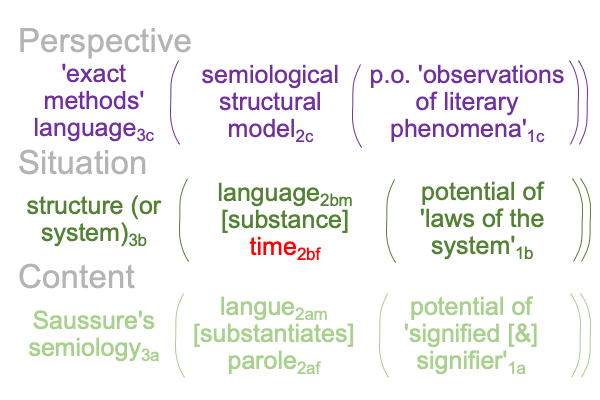
0671 Well, that was easy.
Uspenskij expands his discussion from the situation-level actuality2b outwards.
First, what are the mother tongue’s traditional references concerning time2af?
Obviously, tenses and moods are useful for denoting the past, present and future1b as the potential1b upon which time as a system3b operates.
0672 Here are my associations of the situation-level of the fundament interscope to elements within Uspenskij’s abstract and introduction.
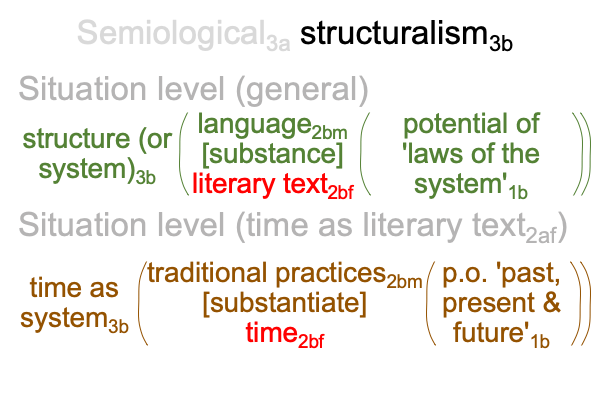
0673 It seems that Uspenskij states the obvious.
He dwells on the content level after the third asterisk (3), where he compares time and space.
Time goes in only one direction. Space goes in three directions. Well, two directions for anyone in an automobile.
So, geography, space and time can mix with one another in the potential of ‘signified [&] signifier’1a within the normal context of Saussure’s semiology. The potential of time2af is ‘something like moving through space’1a, in one direction. There is no going backwards. But, in science fiction, even going back in time is possible.
0674 Saussure’s semiology says that, for speech-alone talk, parole2a and langue2a are two arbitrarily related systems of differences. The structure of the arbitrary relation3b situates the content of within two systems of differences3a.
0675 How do traditional time terms2af and time-related practices2af differ from one another?
Perhaps, they divide the one-dimensional motion of time2am through explicit abstraction.
Certainly, the explicit terms, “past”, “present” and “future” accomplish this. These terms are explicit abstractions. Not all spoken languages maintain such terms. Sometimes, a spoken language will present implicit versions of the above explicit terms, through tenses and moods. In other words, tenses and moods do not explicitly register past, present and future. They implicitly do.
0676 Here is a comparison between the general content-level and the application.
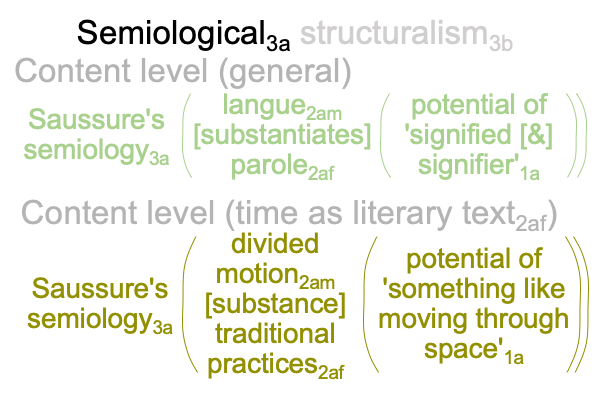
0677 The explicit spoken terms of “past”, “present” and “future” belong to our current Lebenswelt.
What about the Lebenswelt that we evolved in?
0678 This is a question that Uspenskij cannot approach, even though his argument indirectly raises this question. Does “time2af” exist before the first singularity?
Of course it does. We grow older as if we are moving in one direction through space.
So, how does one express time using hand-talk?
[Point to SUN or MOON][move pointing hand towards the rising (for past) or setting (for future)]
0679 How simple is that?
The very same principle that confounds time, space and geography is used in hand-talk to implicitly refer to something that can be imaged and pointed to. The sun and moon move in time. Time is an implicit abstraction.
History and cosmography are confounded in hand-talk words for “time”.
0680 However, the spoken label, “time”, does not exist. Time is not an explicit abstraction. It2af can be performed using gestural-words that picture and point to pre-existing referents. The referent2am precedes the gestural word2af.
0681 To date, the TMS tradition has not confronted the distinction between implicit and explicit abstraction that divides hand- and hand-speech talk and speech-alone talk. What does it mean to refer to time as an implicit abstraction usingthe gestural-words depicted above?
Razie Mah offers an e-book, A Primer on Implicit and Explicit Abstraction (available at smashwords and other e-book venues). Perhaps, this is an adequate place to start. The topic is currently wide open. Inquiry will clarify the differences between the Lebenswelt that we evolved in and our current Lebenswelt.

